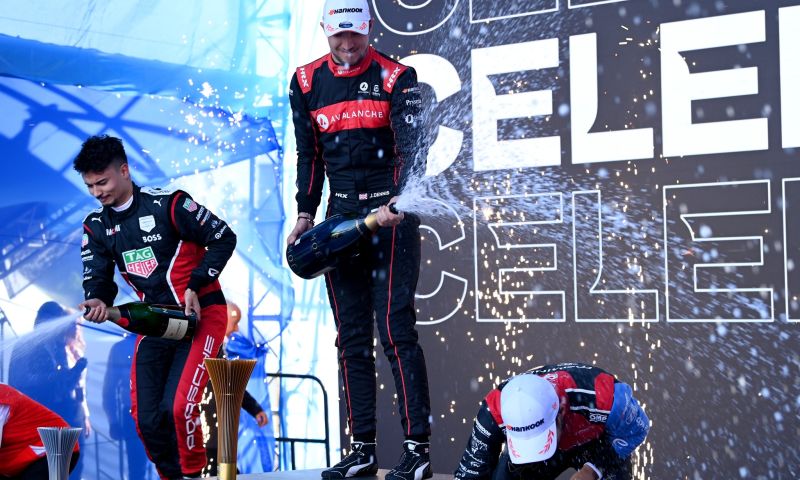Mediabank Formula E | Sam Bagnall
General

What was learned from the first ePrix? Drivers need to go to the gym!
- GPblog.com
Cautiously, his performance was reminiscent of Max Verstappen. Jake Dennis drove during the ePrix of Mexico as the Dutch world champion often did last season's Formula 1: taking the lead with a perfect overtaking move, then taking a nice lead, losing it due to a safety car, only to run out again considerably.
It is, of course, early in the season. Yet Dennis, racing for Michael Andretti's team, showed that he has to be reckoned with this year. In a season that started with no clear favourite, Dennis instantly catapulted himself into a contender for the title.
Gen3
The ePrix in Mexico was the first with the Gen3 cars. The overall verdict - and again, only one race was run - is that it has not improved in terms of viewing. Whereas Formula E was always known for its many position changes, overtaking proved a lot harder with the new generation cars. Drivers warned in advance that it has become more difficult to drive closely behind a predecessor, exactly as was the case for years in Formula 1. Even with attack mode, passing another was difficult.
The Gen3 cars have undergone a major metamorphosis. The cars are narrower than before and have more power (from 335 to 470). Formula E has also switched to tyre supplier Hankook. These proved to have less grip than last year's Michellin's, although the tyres are now more durable. In any case, it caused the cars to slide more.
Steering heavier
Oliver Rowland - who experienced a disaster weekend in his Mahindra - also told GPblog exclusively that keeping the new generation cars on track has become a lot harder. "The big change is the physicality of the car from the driver's perspective," said Rowland. "It's pretty physical, the steering is very heavy, I think with the tires and the front powertrain, it's changed that characteristic a little bit and it's something that I think most of us have been down the gym trying to get a little bit stronger arms."
Rowland honestly admits that rock-hard training was not necessary to drive a Formula E car for years. An indication of that was delivered last year by Nyck de Vries at Monza. Although he was reigning Formula E champion at the time, the Dutchman stepped out of the Williams completely broken after his foray into Formula 1. "When you stop doing F1 or F2, you know, realistically the training perspective for Formula E in the last few years wasn't really needed, whereas I think it was gonna be a little bit of an element for the drivers now moving forward that they have to be as strong as possible to get around driving the car", Rowland said.
Serious accidents - which were feared - the drivers were spared in Mexico. At the next race in Saudi Arabia, new regulations should already be in place to prevent a potential braking problem in advance. Incidentally, who does not appear to be at the start then is Robin Frijns. In an accident in the first round of the ePrix, the Dutchman broke his wrist. He underwent surgery on it in Mexico.

